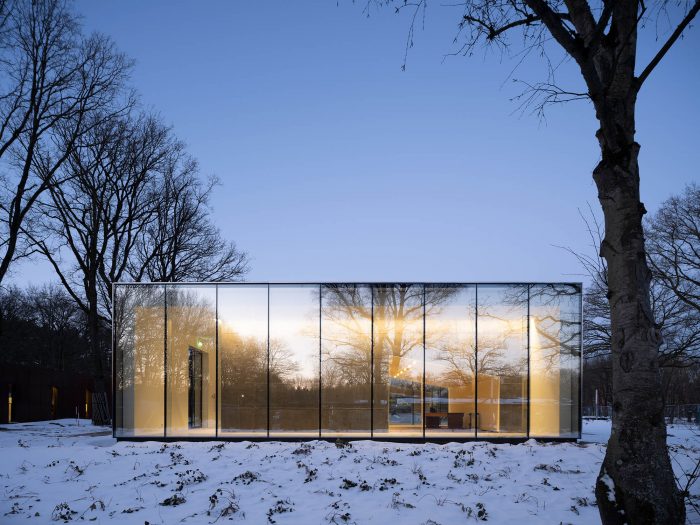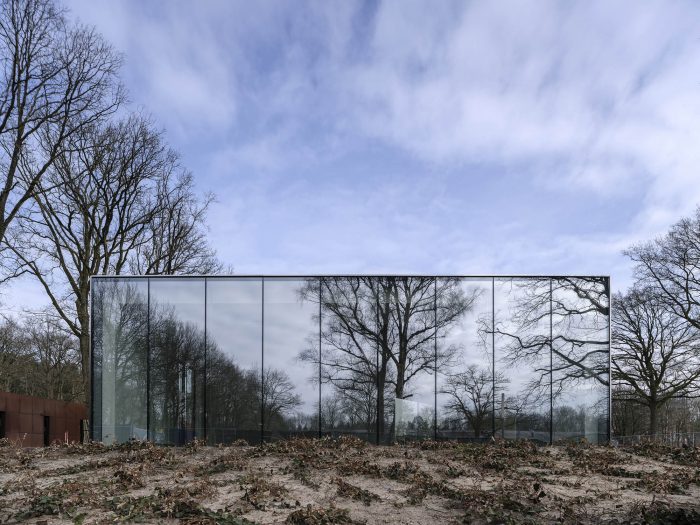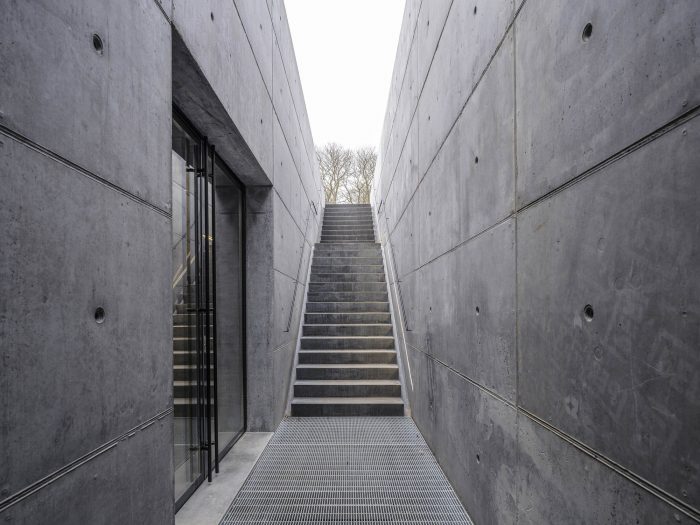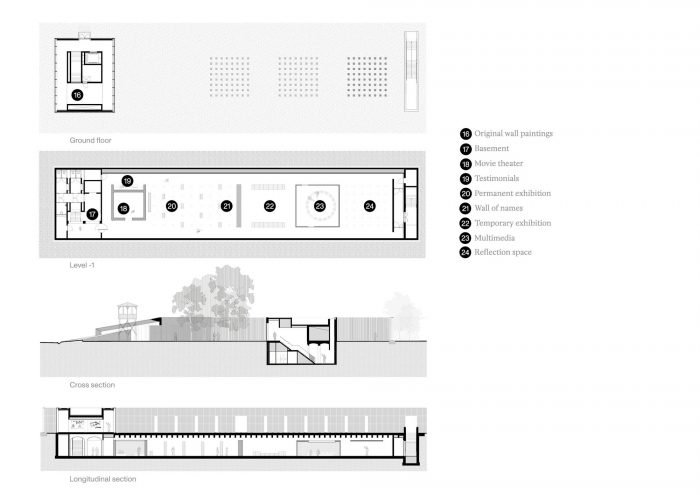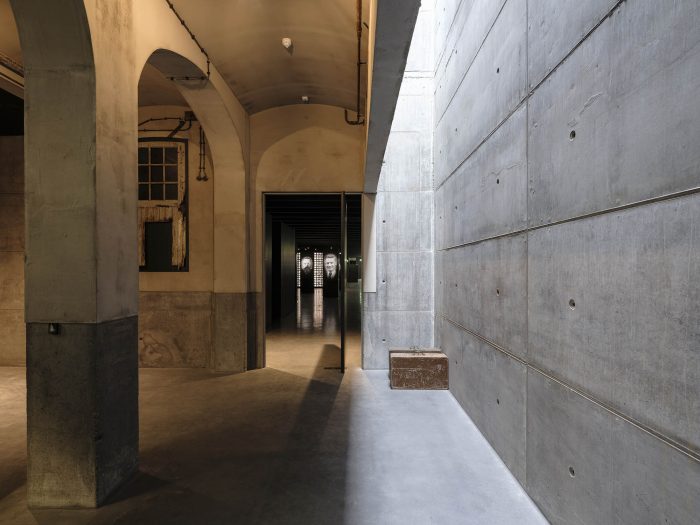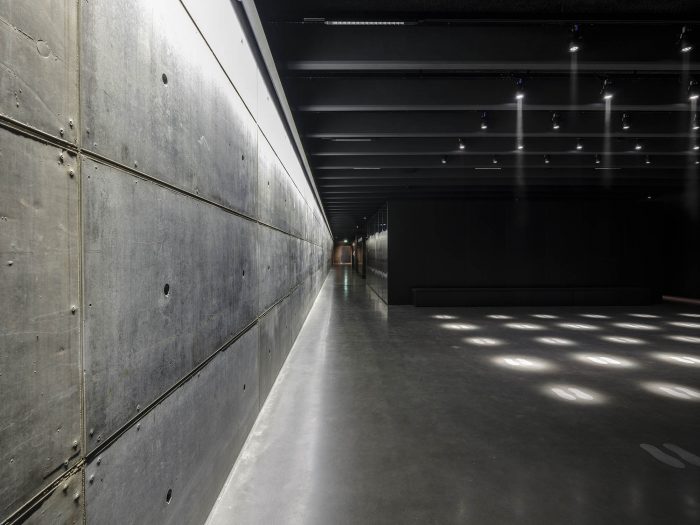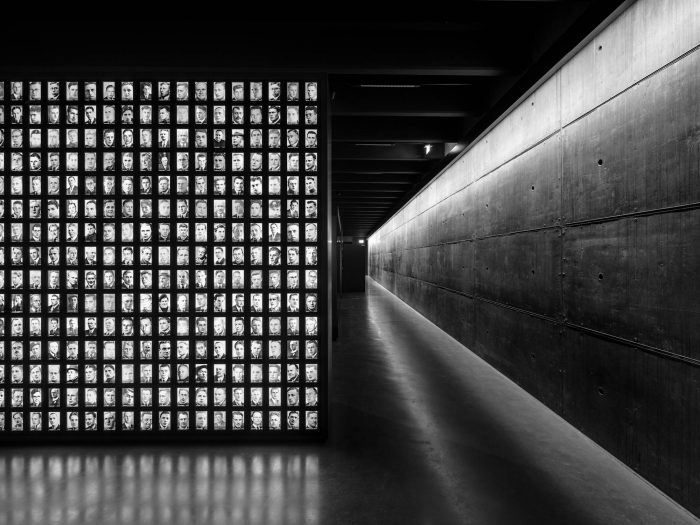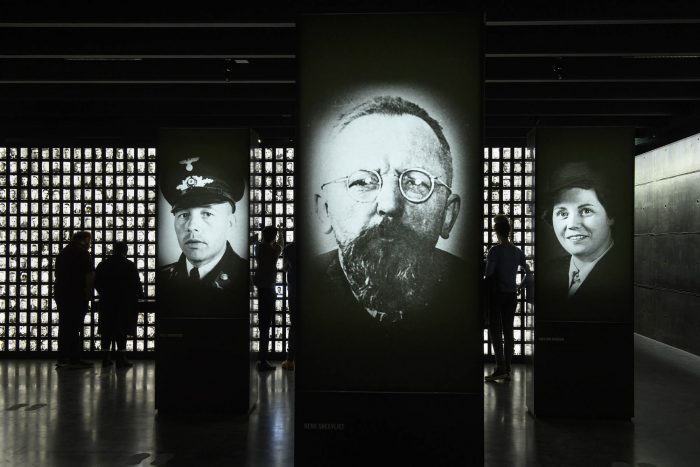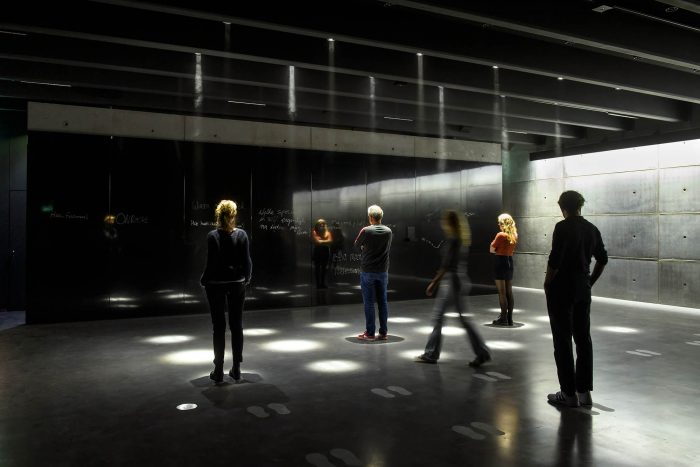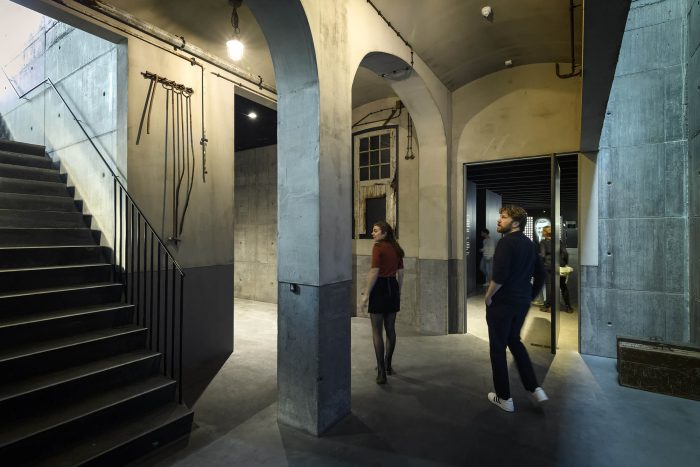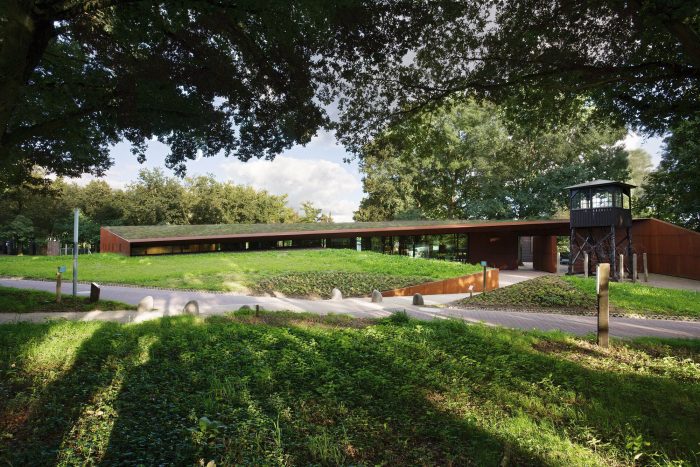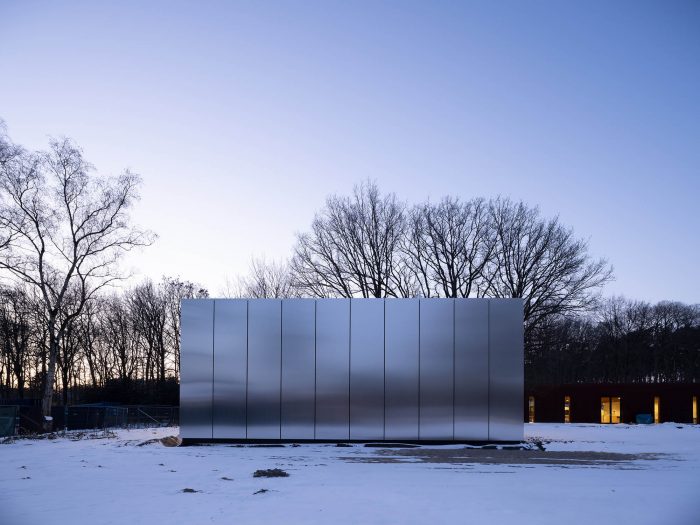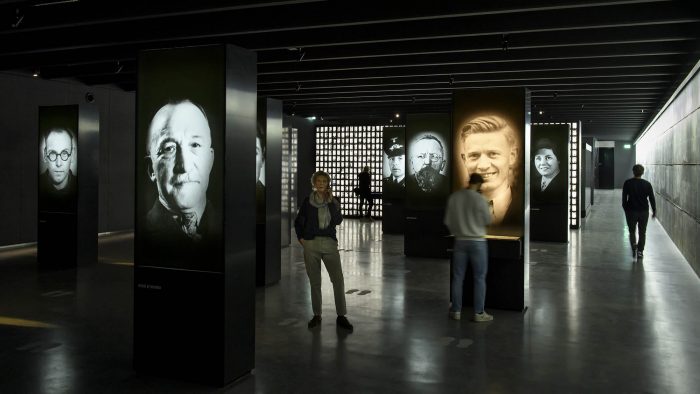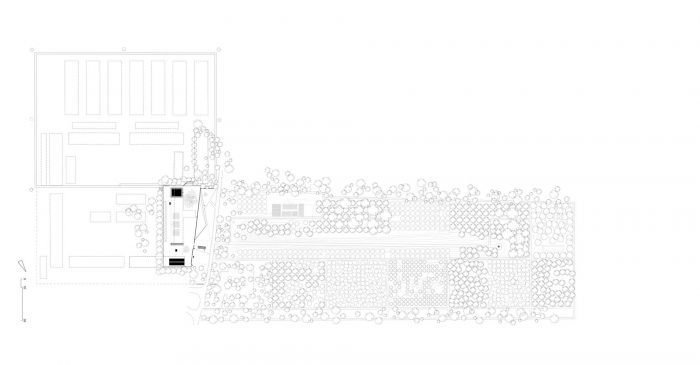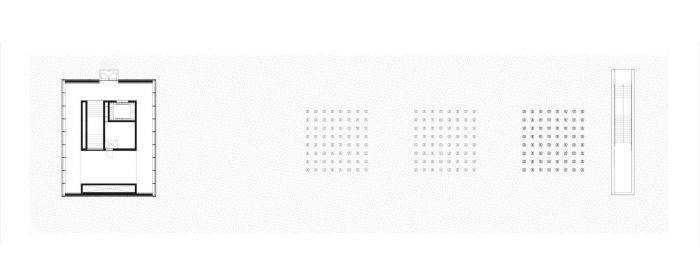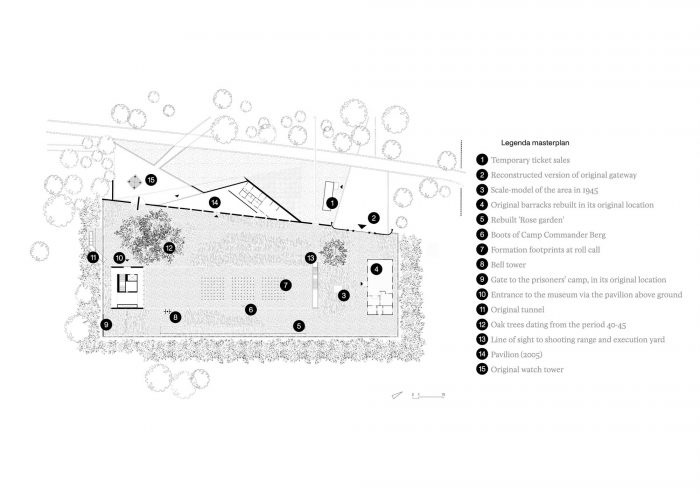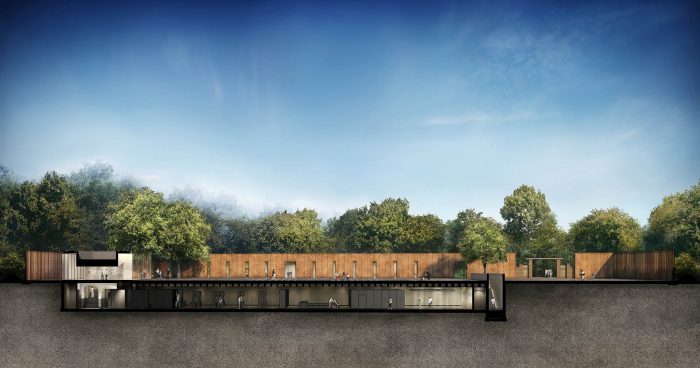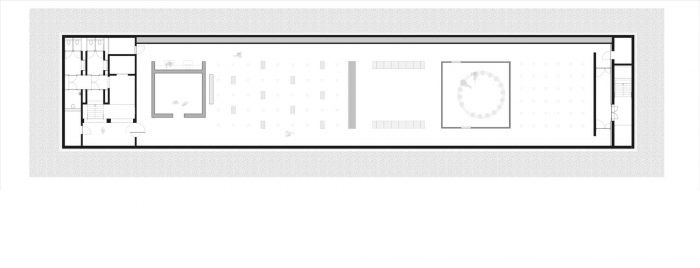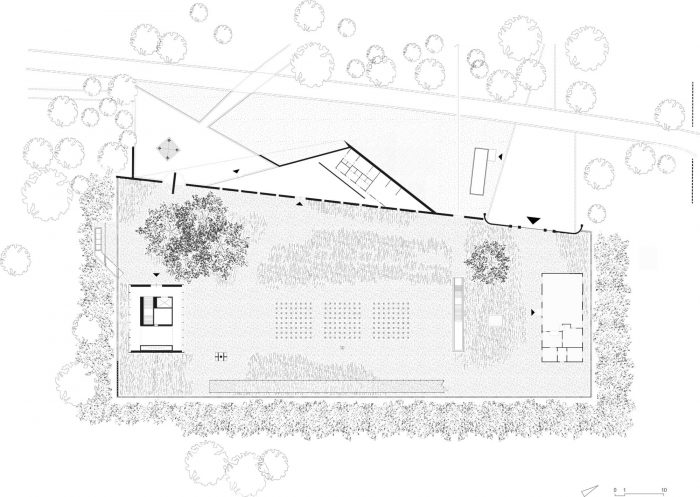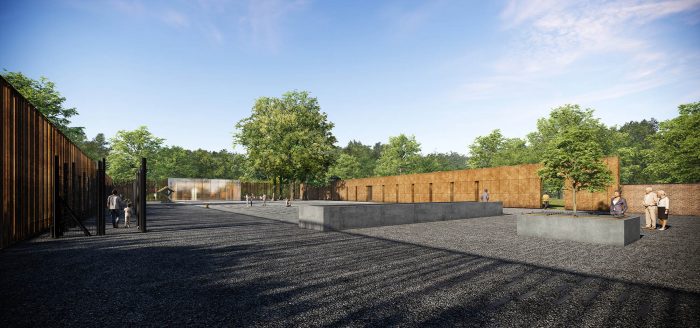在荷兰从二战中解放出来的75年后,国家纪念碑坎普-阿姆斯福特也该更新了。二战期间,这个集中营关押了47.000名囚犯。2005年,英博被委托在这个地方设计一个博物馆。这个集中营成为一个纪念的地方。几十年后,博物馆需要一个不同的展示方式。毕竟,每一个新的一代都以不同的方式看待过去。我们重新审视了这个未被充分曝光的场地,其中几乎没有留下任何原物,并创造了一个可体验的活动。警察学院的部分场地可以使用。这意味着我们可以开始使用原来的入口门,这是营地仅存的几个真实元素之一。我们将营地与森林连接起来。
Seventy-five years after the liberation of the Netherlands from WWII, National Monument Kamp Amersfoort was due for an update. During WWII this concentration camp housed 47.000 prisoners. In 2005 Inbo was commissioned to design a museum at this site. The camp became a place for remembrance. After a few decades, the museum needed a different presentation. After all, every new generation looks at the past differently. We took a fresh look at this underexposed site, of which almost nothing original was left, and created an experienceable event. Part of the grounds of the Police Academy became available. This meant we could start using the original entrance gate, one of the few remaining authentic elements of the camp. We connected the camp site to the forest.
由于原来的建筑都没有留下,我们决定创造一个以空旷和疏离的体验为中心的设计。我们绘制了一条路线,穿过空旷的外部空间,到达新的地下博物馆,并通过现有的亭子,到达执行地点所在的森林。这条路线从明到暗,然后再一次回到明处,代表了这种体验。原址几乎没有留下任何东西,所以我们不得不依靠其他手段来重现孤立、孤独和恐怖的感觉。主要的主题是路线,即通过一系列的门和楼梯,从外部世界过渡。离开博物馆的游客沿着路线上楼。在那里,他们可以直接看到射击场,其最末端是弗里茨-西格(1953年)设计的纪念碑 “石人”。建筑和使用的材料增强了这种体验。内部的黑色加强了从明到暗的过渡。该馆的主题是 “反射”。参观者面对的是他们自己的反射。展馆入口处的阿曼多的诗也暗示了反思。新的点名区被一个由科腾钢片制成的围栏所包围,使人感到与外界隔绝。一个带有混凝土脚印的新开放空间象征着点名区。每个集中营都有这样一个中心点,人们必须在那里长时间站立,每天最多三次。
Because none of the original buildings were left, we decided to create a design that centres on the experience of emptiness and detachment. We mapped out a route through the empty exterior space to the new, underground museum and, via the existing pavilion, to the forest where the execution site is located. This route from light to dark and then back to light once more represents the experience. Almost nothing of the original site remains, so we had to rely on recreating the feeling of isolation, loneliness and terror by other means. The main theme is the route, the transition from the outside world, through a succession of gates and stairs. Visitors leaving the museum follow the route up the stairs. There, they face a direct view of the shooting range with at its extreme end monument ‘The Stone Man’ designed by Frits Sieger (1953). The architecture and the used materials enhance the experience. The black colour of the interior reinforces the transition from light to dark. The theme of the pavilion is ‘reflection’. Visitors are confronted with their own reflection. The poem by Armando at the entrance of the pavilion also hints at reflection. The new roll call area is surrounded by a fence made of Corten steel lamellas which enforce the impression of being isolated from the outside world. A new open space with concrete footprints symbolizes the roll call area. Every concentration camp had such a central point at which people had to stand at attention for long periods of time up to three times a day.
我们用4.5米高的科腾钢围栏板条标记了空地的周边。我们重建了以前的 “玫瑰园”,即用来惩罚人的栅栏区。我们还建立了一个原始营地的模型。我们将幸存的壁画搬回了原来的位置。一个部分重建的地窖将游客引向地下翼(1,126平方米),那里有永久收藏品和一个临时展览。这里有大量的教育空间。目前的主题被用来解决是非、偏见等普遍问题。首先,这一部分表明歧视是所有时代的,而不仅仅是二战时期的。现有的2005年的展馆容纳了博物馆商店和一个接待场所。在以后的阶段,林区将按照其原来的用途布置成生产林。
We marked the perimeter of the vacant space by 4.5 meter high Corten steel fence slats. We reconstructed the former ‘rose garden’, the fenced-off area used to punish people. We also built a model of the original camp. We moved the surviving murals back into their original location. A partially reconstructed cellar leads visitors to the underground wing (1,126 m²) that houses the permanent collection and a temporary exhibition. There is plenty of room for education. Current themes are used to address universal issues of right and wrong, bias and so on. For one thing, this section shows that discrimination is of all time, not only of WWII. The existing 2005 pavilion accommodates the museum shop and a hospitality venue. At a later stage the forested area will be laid out in accordance with its original purpose as a production forest.
Architects: Inbo BV
Area: 1126 m²
Year: 2021
Photographs: Ossip van Duivenbode, Mike Bink
Overall Responsibility:Jacques Prins
Architect:Stephanie Zeulevoet
Project Coordination:Frans Timmers, Bart van Veen
Landscape Architect:Juurlink [+] Geluk BV
Building Contractor:Salverda bouw
Structural Design:Pieters Bouwtechniek
Building Physics:Deerns
City:Leusden
Country:The Netherlands


